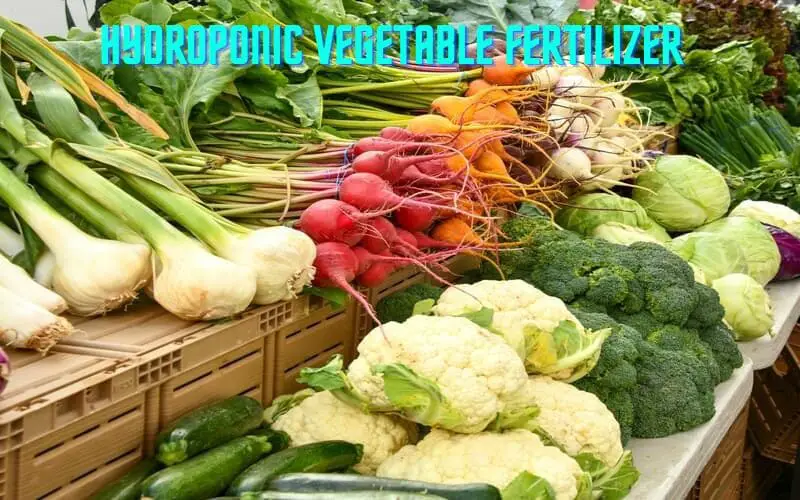Hydroponic Vegetable Fertilizer: The Best Practices and Tips

Introduction
Welcome to the exciting world of hydroponic vegetable cultivation! In this comprehensive guide, we will explore the benefits of hydroponic vegetable fertilizer, selecting the right fertilizer, best practices for application, nutrient requirements, common mistakes to avoid, and conclude with valuable insights for successful hydroponic gardening.
Benefits of Hydroponic Vegetable Fertilizer
When it comes to hydroponic vegetable cultivation, the choice of fertilizer plays a pivotal role in promoting robust plant growth. Hydroponic vegetable fertilizer offers several distinct advantages, including:
- Precise nutrient delivery
- Optimized plant uptake
- Enhanced growth rates
By providing a well-balanced suite of essential nutrients and minerals, hydroponic vegetable fertilizer fosters healthy plant development and higher yields.
Furthermore, the use of hydroponic vegetable fertilizer ensures:
- Consistent nutrient availability
- Reduced risk of nutrient deficiencies
- Minimized environmental impact
Choosing the Right Fertilizer for Hydroponic Vegetables
Choosing the right fertilizer for hydroponic vegetables is a critical decision that directly impacts the success of your crop. Factors such as nutrient composition, solubility, and suitability for hydroponic systems must be carefully evaluated. Look for fertilizers specifically formulated for hydroponic applications, ensuring compatibility with the unique requirements of soilless agriculture. Additionally, consider the nutrient ratios and ensure they align with the specific needs of the vegetable crops being cultivated.
- Factors to consider when choosing hydroponic fertilizers:
- Fertilizer nutrient composition
- Solubility of the fertilizer
- Suitability for hydroponic systems
- Compatibility with soilless agriculture
- Nutrient ratios and alignment with crop needs
Best Practices for Applying Fertilizer in Hydroponic Systems
Effective application of fertilizer in hydroponic systems is essential for maximizing nutrient uptake and promoting healthy plant growth. Utilize precise dosing methods to avoid over or under-fertilization, maintaining a balanced nutrient profile. Regularly monitor pH and electrical conductivity levels to ensure optimal nutrient availability. Implement a comprehensive schedule for fertilizer application, considering the growth stage and specific nutrient requirements of the hydroponically cultivated vegetables.
Understanding Nutrient Requirements for Hydroponic Vegetables
Understanding the specific nutrient requirements of hydroponic vegetables is fundamental to achieving optimal growth and productivity. Essential nutrients such as nitrogen, phosphorus, potassium, and calcium play crucial roles in supporting plant development. Additionally, micronutrients including iron, magnesium, and zinc are essential for maintaining overall plant health. By comprehensively understanding the nutrient needs of hydroponic vegetables, growers can fine-tune their fertilizer applications to meet the precise demands of the cultivated crops.
Common Mistakes to Avoid in Fertilizing Hydroponic Vegetables
When it comes to fertilizing hydroponic vegetables, there are several common mistakes that can have a detrimental impact on plant health and overall yield. By being aware of these common pitfalls, hydroponic growers can take proactive measures to ensure the success of their crops. Let’s delve deeper into some of the most prevalent mistakes and how to effectively avoid them:
- Over-fertilization: Over-fertilization can lead to nutrient imbalances, root damage, and ultimately, reduced plant health. It’s essential to carefully monitor and regulate the nutrient concentration in the hydroponic system to prevent over-fertilization.
- Imbalanced Nutrient Ratios: Maintaining the correct nutrient ratio is crucial for the optimal growth and development of hydroponic vegetables. An imbalance in essential nutrients such as nitrogen, phosphorus, and potassium can result in stunted growth and poor overall plant health.
- Inadequate pH Management: The pH level of the nutrient solution plays a pivotal role in nutrient availability to the plants. Inadequate pH management can hinder nutrient uptake, leading to deficiencies or toxicities. Regular monitoring and adjustment of pH levels are essential for maintaining a healthy growing environment for hydroponic vegetables.
To effectively address these challenges, meticulous monitoring, precise dosing, and regular system maintenance are imperative. By implementing these best practices, growers can mitigate potential issues and sustain optimal growing conditions for their hydroponic vegetables.
Conclusion
As we conclude this comprehensive exploration of hydroponic vegetable fertilizer, it’s evident that the judicious selection and application of fertilizers profoundly impact the success of soilless agriculture. By understanding the benefits, best practices, and pitfalls to avoid, growers can optimize their hydroponic systems and cultivate thriving vegetable crops. With a focus on precision, balanced nutrition, and proactive management, hydroponic vegetable cultivation offers a sustainable and innovative approach to maximizing plant growth in minimal spaces.
